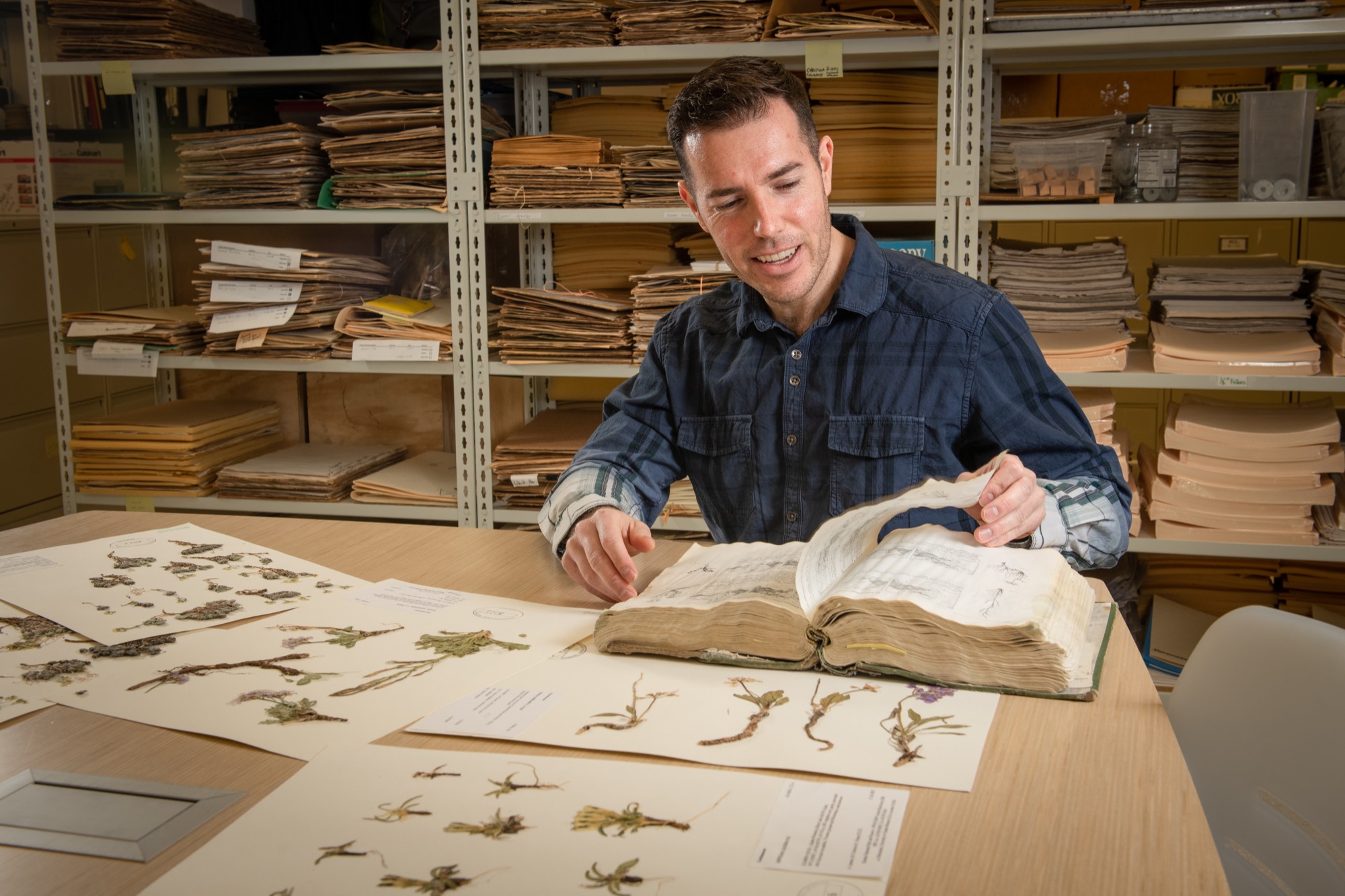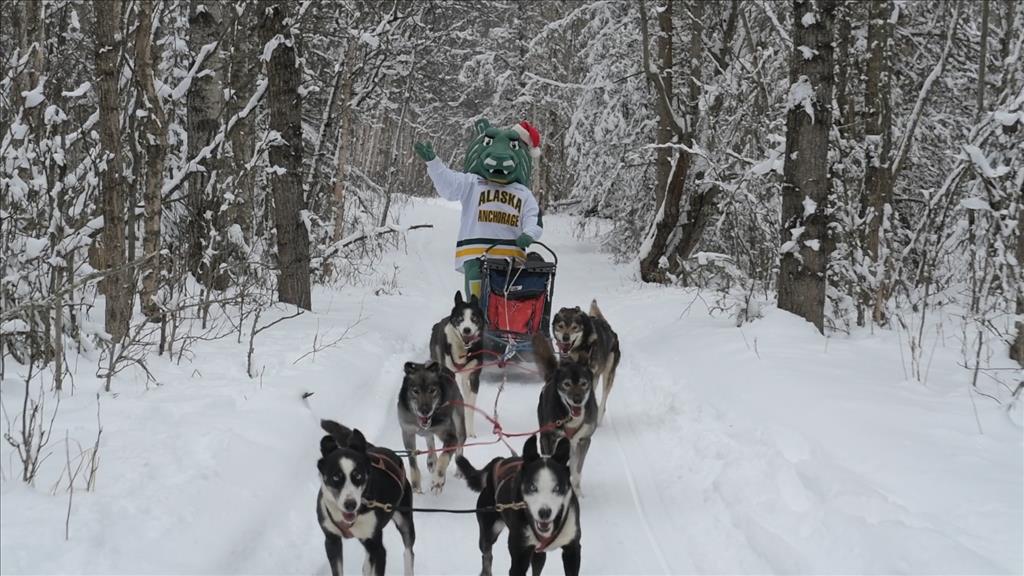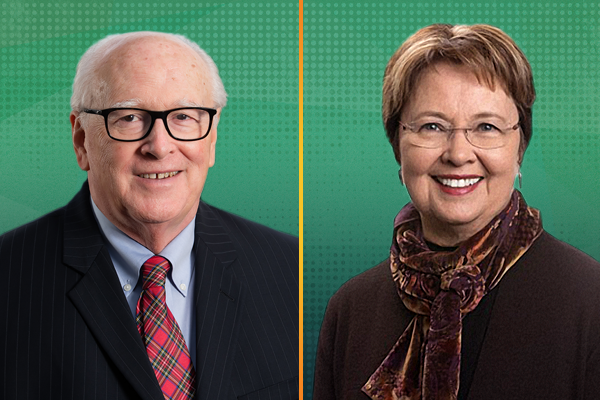Bridging the gap between classroom and real life
by cmmyers |
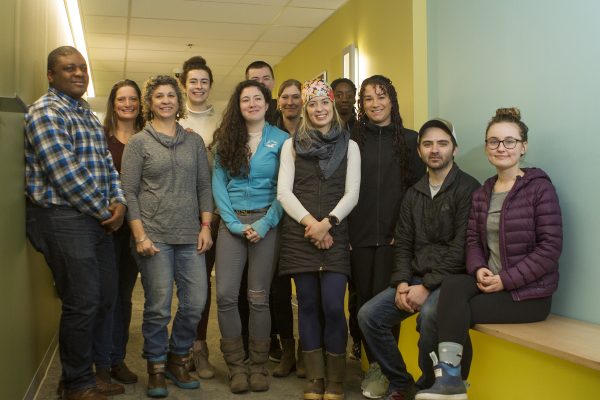
UAA Associate Professor Shannon Donovan's fall 2018 capstone class had the unique opportunity to help in drafting Anchorage's first Climate Action Plan. (Photo by Brett Rawalt / University of Alaska Anchorage)
It's early December and the last day of capstone class for Associate Professor of Environmental Studies Shannon Donovan and her group of about 25 students. She leads the group in one final lecture before exams and students scatter for the holiday break the following week. It's been a busy fall semester for these juniors and seniors, who on top of their required capstone coursework, had a unique project to add to their university experience and resume. These students, mostly environment and society majors, have been working on the Municipality of Anchorage's (MOA) Climate Action Plan (CAP), and may potentially see the fruits of their hard work turn into actual city policy that will help Anchorage residents.
The MOA CAP is not a new concept. In fact, the idea was started in a classroom about a decade ago by Mara Kimmel, a former UAA political science professor and the current first lady of Anchorage, and Kimberly Pace, a UAA political science professor. The two professors assigned their students to draft a CAP for a course project and handed the finished draft to outgoing mayor Mark Begich. As hands changed in city government, the CAP was never adopted and sat dormant until current mayor Ethan Berkowitz revitalized it and recommitted to making a CAP a top priority for Anchorage.
"I was really excited when Mara Kimmel, about a year and a half ago, approached me about getting involved in some aspects of the CAP they were putting together," Donovan said.
She said that Kimmel had reached out to her and a few others across the university for expertise and help in coordinating a group to facilitate the drafting of the plan. Micah Hahn, assistant professor of environmental health at the Institute of Circumpolar Health Studies, helmed the project, and the CAP has been on warp speed since earnest work toward creating a new plan began a little over a year and a half ago. A draft is scheduled to be presented to the Anchorage Assembly in February.
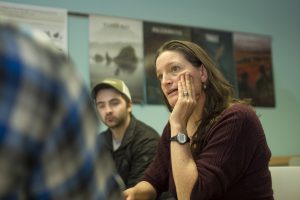
Shannon Donovan helps facilitate a discussion on the Climate Action Plan during the final day of her capstone class. (Photo by Brett Rawalt / University of Alaska Anchorage)
Donovan said this was the perfect opportunity to give her junior and senior students a front-row seat to how different government and non-government entities can come together, collaborate and create policy that will have a direct impact on a city's residents.
"I'm a conservationist and social scientist, and my interest area is helping to bridge the gap between science and policy," said Donovan. "Working on the CAP is really a natural fit for me."
It also happened to be a perfect fit for her capstone students who are mostly environment and society majors.
The CAP
CAPs vary from city to city and can be as simple as a one-page document on a municipality's website to a full-on downloadable e-book filled with in-depth instruction on how to mitigate the impacts of climate change on a city and its residents.
One thing is for certain: the changing climate is impacting and will continue to impact people living in the circumpolar north. In addition to offering help in navigating climate related issues, CAPs also provide guidelines for the daily humdrum of city life, from developing better infrastructure like bridges and roads, to withstanding inclement weather, to evaluating land use and how space can better serve those using it. It's all about creating a more livable and resilient city in a place where the environment can be pretty harsh.
These are all areas that the CAP steering committee and its sector groups worked to address, and where Donovan's capstone students were able to roll up their sleeves and put their textbook knowledge to real-world use.
"It was really interesting to work with a lot of different people from different backgrounds in the community - everything from people who work in housing groups to energy companies - and being able to discuss this one common issue, that we all cared about together," said Claire Rhodes, a junior majoring in environment and society with a concentration in geology. "It was something tangible, really happening in the city - it was pretty exciting."
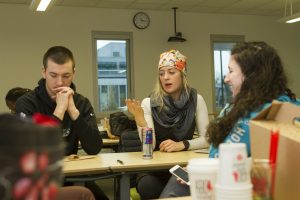
Claire Rhodes participates in a discussion on her experience working on the city's Climate Action Plan during the last day of capstone class. (Photo by Brett Rawalt / University of Alaska Anchorage)
Many of Donovan's students echoed Rhodes' statement, saying this first-time experience working on such an important project with so many different groups of people, representing many sectors of industry, was exciting. But they also recognized how dense and complicated the task of drafting a CAP for a diverse city like Anchorage is.
"I think working on the Climate Action Plan grounded us students," said Thomas Baye, an environment and society senior assigned to work with the land and transportation subcommittee. "It was that first-time experience of working in a multidisciplinary team. The problem is complex and the solution is going to have to come from working in groups, from diverse disciplines and the collaboration that is required of this - the understanding, the respect for opposing views. This takes a lot of hard work to get solutions to complex problems."
The CAP is an enormous, multifaceted and interdisciplinary project that needs to represent a diverse group of people, not only in socioeconomic class but also in geography and terrain. Numerous representatives from MOA departments, as well as organizations representing major industries in Alaska and experts from the university, came together to develop a city CAP.
CAP-ing off the semester
"I think these sort of real-life issues are great for students because they get a chance to dabble in real-world problem-solving within the safety of a university course," said Donovan. "The students had to be flexible because we were working within a very fast moving process, and I think that's a valuable skill set."
Donovan said she is proud of her students' dedication and how they represented the university on such a huge project. She says she was impressed by how they each rose to the occasion to engage with their subcommittee groups.
"I think this is a great 'rubber meets the road' kind of project," Donovan said. "For me, having students be successful means they are going to go off and be successful outside of the university."
Written by Catalina Myers, UAA Office of University Advancement
 "Bridging the gap between classroom and real life" is licensed under a Creative Commons Attribution-NonCommercial 4.0 International License.
"Bridging the gap between classroom and real life" is licensed under a Creative Commons Attribution-NonCommercial 4.0 International License.










